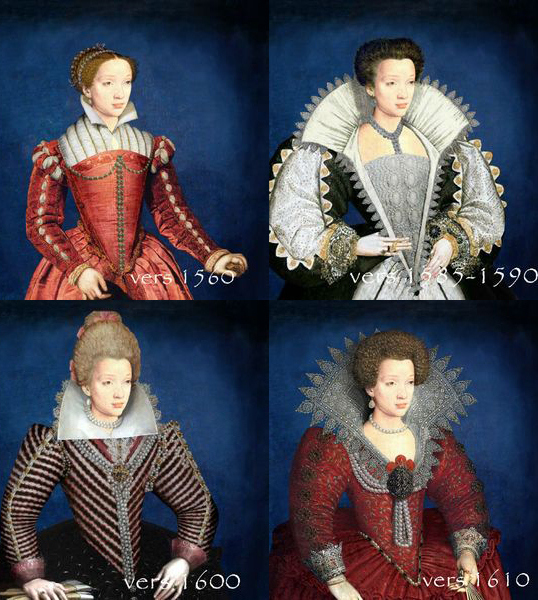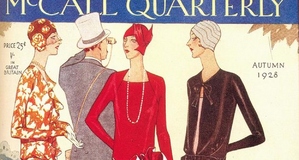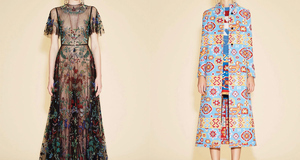Featured Article:Women's Fashion and the Renaissance: Considering Fashion, Women's Expression, and Sumptuary Law in Florence and Venice
By
2013, Vol. 5 No. 10 | pg. 1/3 | »
IN THIS ARTICLE
KEYWORDS
AbstractIn 1487, Laura Cereta wrote a letter in which she railed against women who “strive by means of exquisite artistry to seem more beautiful that the Author of their beauty decreed.” Cereta represents a voice uncommon among women of her time. Despite her biting remark that women who were “born free … boast to be held captive,” the vast majority of women during her era were already captive by their inability to express themselves. It was, rather, the advent of fashion that allowed them any form of expression whatsoever. It introduced a new, ever-changing form of expression that permanently altered the fabric of western society. Women, in particular, seem to have embraced these changes and the ability to manipulate their image in ways not previously available to them. Unsurprisingly, legislators between the 13th and 17th centuries began to pass large quantities of sumptuary laws to regulate the resulting extravagance. Those laws of monarchial states had a distinctive objective of increasing the grandeur of the king and limiting the power of the nobility. Italian sumptuary law, however, had a far more self-regulatory character. The vast majority of these laws regulated women’s attire specifically, an aspect overlooked in the sumptuary laws of monarchies. This paper focuses on the place of women in Italian Renaissance society, the developments that occurred in fashion during this period, the ways in which women used these developments to express themselves, and the reasons for and responses to the appearance of sumptuary laws after the 13th century. In 1487, Laura Cereta wrote a letter to Augustinus Aemilius in which she railed against women who “strive by means of exquisite artistry to seem more beautiful that the Author of their beauty decreed.” At eighteen, she was a young widow and would remain unmarried for the rest of her short life. Starting around the time of her marriage at the age of fifteen, she maintained a Latin correspondence with other humanists that would continue for the rest of her life. In her letter, Cereta curses female ornamentation. “Wives are bewitched by rich display,” she remarks in seeking to differentiate herself from the other women of her time. She also criticizes “those who, to satisfy the appetite of their wives, destroy their patrimonies” before going on to blame luxury which “has thrived in this age, more than all others” for the various political ills Venice suffered.1 Perhaps mindful of her husband’s recent passing, she concludes her letter by admonishing her own sex: “We should seek the adornment of honor, not vulgar display, and we should pursue this life mindful of our mortality” (Cereta in Bartlett, p. 192-94).
This image, rendered by the author of the blog Le Costume Historique, shows the evolution of women's fashion during the late Renaissance period. Cereta represents a voice uncommon among women of her time, and suitably so, because Cereta was hardly the typical Renaissance woman. Born into an aristocratic family, she received a convent education before her father taught her Latin, Greek, and mathematics. She became particularly skilled in mathematics and Latin. Indeed, many of her male contemporaries did not believe that a woman could write such elegant Latin (Bartlett, 1992, p. 192). Cereta used her writings to express herself, evidently a medium she found perfectly adequate; as she declares in her letter: “I care more for letters than for flashy clothes.” Despite her biting remark that women who were “born free … boast to be held captive,” the vast majority of women during her era were already captive by their inability to express themselves (Cereta, p. 193). It was, rather, the advent of fashion that allowed them any form of expression whatsoever. In the words of Diane Owen Hughes (1992), “If fashion is a woman, it is because women have been left only their clothing as a means of tailoring a social persona” (p. 155). Fashion created a new world. It introduced a new ever-changing form of expression that permanently altered the fabric of western society. Around 1350, innovations in hairstyles, footwear, and dress styles that provided for greater customization and differentiation between the sexes heralded the beginning of constantly evolving trends (Belfanti, 2009, p. 261). Women, in particular, seem to have embraced these changes and the ability to manipulate their image in ways not previously available to them. Unsurprisingly, legislators between the 13th and 17th centuries began to pass large quantities of sumptuary laws to regulate the resulting extravagance (Hunt, 1996, p. 30-31). Though sumptuary laws were common throughout Europe, those laws of monarchial states—particularly France and Spain—had a distinctive objective of increasing the grandeur of the king and limiting the power of the nobility (Killerby, 2002, p. 24). Italian sumptuary law, however, had a far more self-regulatory character. The vast majority of these laws regulated women’s attire specifically, an aspect overlooked in the sumptuary laws of monarchies (Killerby, 2002, p. 33; 38). Furthermore, Italian sumptuary law generally applied equally to all women with little regard to social class (Laufenberg, n.d., p. 5). Italian sumptuary law, as Carlo Marco Belfanti (2009) describes it, “did not aim to tighten up social hierarchy..., but rather to reclassify the outward signs of social status in accordance with new ways of dressing” (p. 262). This paper focuses on the place of women in society, the developments that occurred in fashion during this period, the ways in which women used these developments to express themselves, and the reasons for and responses to the appearance of sumptuary laws after the 13th century. The vast majority of laws—of those explored by scholars thus far—occurred in the cities of Florence and Venice. As a result, this paper focuses on those cities, that seemed to embrace sumptuary law with the most zeal (Killerby, 2002, p. 28-29).2 "This Consumer of Wealth"In his treatise “On Wifely Duties,” Francesco Barbaro, discussing the fine garments of women, evidently quotes an outside source when he refers to women thus: “…in the market square ‘this consumer of wealth’ cannot be sufficiently decked out or adorned” (in Bartlett, p. 152). Barbaro’s stance on women is clear. Certainly, Francesco Barbaro was not the only man of the times to express his feelings about women with “such misogynist venom,” to borrow Catherine Killerby’s (2002) phrase (p. 111). The Church’s views of sumptuary excess were distinctly misogynistic (Frick, 2002, p. 186). San Bernardino echoes Barbaro’s accusations in his reprimand from the pulpit: “At home, you dress like baker women, wearing rags … but save your finery for when you go outdoors.” The laws of the period, too, have a highly misogynist tone (Rainey, 1991, p. 235). A Florentine law of 1427 refers to the “’lasciviousness of the female sex.’” Perhaps more tellingly, in 1433, Florence’s leading magistrates described the purpose of the new officials of women’s ornaments as: to restrain the barbarous and irrepressible bestiality of women who, not mindful of the weakness of their nature, forgetting that they are subject to their husbands, and transforming their perverse sense into a reprobate and diabolical nature, force their husbands with their honeyed poison to submit to them. (Killerby, 2002, p. 119) While scholars debate on the extent to which such misogyny was the norm, those documents that do feature such overt misogyny are telling.3 To borrow Diane Owen Hughes’ (1983) description, “women were an object of fear, their power sufficient to ruin cities” (p. 97). Renaissance Italy was a largely patriarchal society that excluded women from the public sphere legally, politically, economically, and socially (Killerby, 2002, p. 111-113). Indeed, after her marriage, a woman was essentially an outsider, lineally distinct from her husband and her own children. As a result, women’s social identities were more fluid than those of men, an aspect women took advantage of by embracing fashion (Hughes, 1992, p. 140; 155-56). Renaissance women’s lives were also highly regulated and restricted—both by their husbands and communal governments (Killerby, 2002, p. 111-113). Sumptuary laws, which we will examine later, make evident that women were not even permitted to dress as they wished (Rainey, 1991, p. 218). This is not to suggest that women had no voice whatsoever. Certainly, there were instances of female protest against sumptuary law. Beginning in 1437, Venetian women petitioned the pope for and succeeded in gaining exemption from the sumptuary laws of their city (Killerby, 1999, p. 257). However, women in less aristocratic republics like Florence seem to have felt less able to express themselves and there are fewer instances of protest against sumptuary laws (Killerby, 2002, p. 121).Continued on Next Page » Suggested Reading from Inquiries Journal
Inquiries Journal provides undergraduate and graduate students around the world a platform for the wide dissemination of academic work over a range of core disciplines. Representing the work of students from hundreds of institutions around the globe, Inquiries Journal's large database of academic articles is completely free. Learn more | Blog | Submit Latest in History |
















